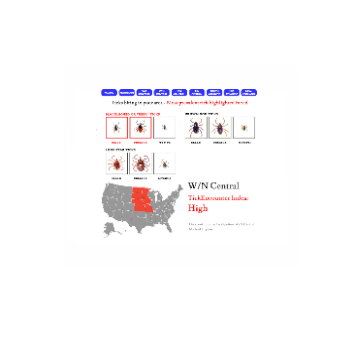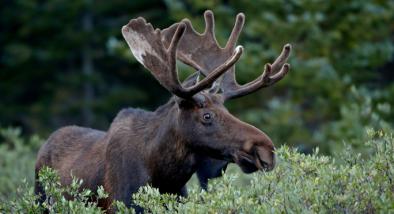Science Source
Winter ticks on moose and other ungulates: factors influencing their population size
- Reviews research on northern populations of winter ticks (Dermacentor albipictus), particularly that relating to sources of variation in tick numbers
- Finds that mean numbers of ticks on moose (Alces alces) populations from 3 provinces were 32,527; 18 percent of moose had infestations numbering over 50,000; six percent had over 80,000; the maximum number of ticks recovered from one moose was 149,916
- Finds intrinsic sources of variation in size of tick populations included potential avoidance of sessile (fixed in one place) aggregations of larvae by moose in autumn, defensive grooming, and host death
- Finds winter tick-induced premature loss of winter hair, resulting from grooming, was prevalent and widespread throughout the southern range of moose in North America
- Finds that extrinsic sources of variation in the size of tick populations included the effect of autumn weather on concentrations of tick larvae and magpies on survival of shed adult female ticks
- States that reports of dead or debilitated moose with large numbers of ticks are numerous in Alberta and elsewhere
Related Content
Real Time Data

Mar 29, 2016 | Tick Encounter Resource Center, University of Rhode Island
Current US Tick Activity
Headline

Mar 29, 2016 | onearth
What’s Killing Minnesota’s Moose?
Science Source
| National Wildlife Federation
Wildlife in a Warming World
Science Source
| Parasitology Research
Seroprevalence, isolation, first genetic characterization of Toxoplasma gondii, and possible congenital transmission in wild moose from Minnesota, USA
Shiv K. Verma, Michelle Carstensen, Rafael Calero-Bernal et al


